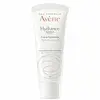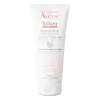What's inside
What's inside
 Key Ingredients
Key Ingredients

 Benefits
Benefits

 Concerns
Concerns

 Ingredients Side-by-side
Ingredients Side-by-side

Water
Skin ConditioningParaffinum Liquidum
EmollientGlycerin
HumectantIsohexadecane
EmollientDimethicone
EmollientCetearyl Alcohol
EmollientCarthamus Tinctorius Seed Oil
MaskingIsocetyl Stearoyl Stearate
EmollientPEG-100 Stearate
1,2-Hexanediol
Skin ConditioningButyrospermum Parkii Butter
Skin ConditioningCetearyl Glucoside
EmulsifyingBenzoic Acid
MaskingBeta-Sitosterol
Emulsion StabilisingBHT
AntioxidantDisodium EDTA
Parfum
MaskingPolyacrylate-13
Polyisobutene
Polysorbate 20
EmulsifyingSodium Hydroxide
BufferingSorbitan Isostearate
EmulsifyingXanthan Gum
EmulsifyingWater, Paraffinum Liquidum, Glycerin, Isohexadecane, Dimethicone, Cetearyl Alcohol, Carthamus Tinctorius Seed Oil, Isocetyl Stearoyl Stearate, PEG-100 Stearate, 1,2-Hexanediol, Butyrospermum Parkii Butter, Cetearyl Glucoside, Benzoic Acid, Beta-Sitosterol, BHT, Disodium EDTA, Parfum, Polyacrylate-13, Polyisobutene, Polysorbate 20, Sodium Hydroxide, Sorbitan Isostearate, Xanthan Gum
Water
Skin ConditioningGlycerin
HumectantIsopropyl Palmitate
EmollientPentaerythrityl Tetracaprylate/Tetracaprate
EmollientPropylene Glycol Dicaprylate/Dicaprate
EmollientCaprylic/Capric Triglyceride
MaskingGlyceryl Stearate
EmollientMyreth-3 Myristate
EmollientPEG-100 Stearate
Acrylates/C10-30 Alkyl Acrylate Crosspolymer
Emulsion StabilisingBenzoic Acid
MaskingCaprylyl Glycol
EmollientCarbomer
Emulsion StabilisingGlycine
BufferingGlycine Soja Seed Extract
Skin ConditioningOenothera Biennis Oil
EmollientPEG-32
HumectantPEG-400
Emulsion StabilisingPentyl Rhamnoside
Skin ConditioningSodium Hydroxide
BufferingTocopherol
AntioxidantTocopheryl Acetate
AntioxidantWater, Glycerin, Isopropyl Palmitate, Pentaerythrityl Tetracaprylate/Tetracaprate, Propylene Glycol Dicaprylate/Dicaprate, Caprylic/Capric Triglyceride, Glyceryl Stearate, Myreth-3 Myristate, PEG-100 Stearate, Acrylates/C10-30 Alkyl Acrylate Crosspolymer, Benzoic Acid, Caprylyl Glycol, Carbomer, Glycine, Glycine Soja Seed Extract, Oenothera Biennis Oil, PEG-32, PEG-400, Pentyl Rhamnoside, Sodium Hydroxide, Tocopherol, Tocopheryl Acetate
 Reviews
Reviews

Ingredients Explained
These ingredients are found in both products.
Ingredients higher up in an ingredient list are typically present in a larger amount.
Benzoic Acid is used to preserve and adjust the pH of products.
The antimicrobial property of Benzoic Acid helps elongate a product's shelf life. Its main role is to reduce fungi growth and is not found to be effective at fighting bacteria. Therefore Benzoic Acid is always added along with other preservatives.
In its pure form, Benzoic Acid looks like a white crystalline solid. It has slight solubility in water.
The name of Benzoic Acid comes from gum benzoin, which used to be the sole source of deriving this ingredient. Benzoic Acid is the most simple aromatic carboxylic acid.
Benzoic Acid is naturally occuring in strawberries, mustard, cinnamon, and cloves. It has a slight scent but is not considered to be a fragrance.
Learn more about Benzoic AcidGlycerin is already naturally found in your skin. It helps moisturize and protect your skin.
A study from 2016 found glycerin to be more effective as a humectant than AHAs and hyaluronic acid.
As a humectant, it helps the skin stay hydrated by pulling moisture to your skin. The low molecular weight of glycerin allows it to pull moisture into the deeper layers of your skin.
Hydrated skin improves your skin barrier; Your skin barrier helps protect against irritants and bacteria.
Glycerin has also been found to have antimicrobial and antiviral properties. Due to these properties, glycerin is often used in wound and burn treatments.
In cosmetics, glycerin is usually derived from plants such as soybean or palm. However, it can also be sourced from animals, such as tallow or animal fat.
This ingredient is organic, colorless, odorless, and non-toxic.
Glycerin is the name for this ingredient in American English. British English uses Glycerol/Glycerine.
Learn more about GlycerinPeg-100 Stearate is an emollient and emulsifier. As an emollient, it helps keep skin soft by trapping moisture in. On the other hand, emulsifiers help prevent oil and water from separating in a product.
PEGS are a hydrophilic polyether compound . There are 100 ethylene oxide monomers in Peg-100 Stearate. Peg-100 Stearate is polyethylene glycol ester of stearic acid.
Sodium Hydroxide is also known as lye or caustic soda. It is used to adjust the pH of products; many ingredients require a specific pH to be effective.
In small amounts, sodium hydroxide is considered safe to use. However, large amounts may cause chemical burns due to its high alkaline.
Your skin has a natural pH and acid mantle. This acid mantle helps prevent harmful bacteria from breaking through. The acid mantle also helps keep your skin hydrated.
"Alkaline" refers to a high pH level. A low pH level would be considered acidic.
Learn more about Sodium HydroxideWater. It's the most common cosmetic ingredient of all. You'll usually see it at the top of ingredient lists, meaning that it makes up the largest part of the product.
So why is it so popular? Water most often acts as a solvent - this means that it helps dissolve other ingredients into the formulation.
You'll also recognize water as that liquid we all need to stay alive. If you see this, drink a glass of water. Stay hydrated!
Learn more about Water